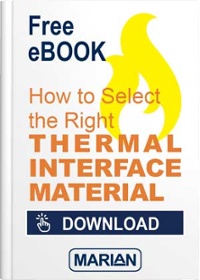
This is the kick-off to our Hot Summer Blog Series all about Thermal Management Materials.
Why focus on Thermal management Materials? Incredible technological advancements have been made over the past 30 years in electronic devices. Just look at the image below.

As devices have become smaller, thinner, and more powerful, the need for the efficient removal of heat has become critical to the reliability and longevity of the device. Heat is a normal by-product of electronics operation. Thermal Management Materials exist to aid in the efficient conduction of heat within these devices to keep them running at a safe operating temperature. There are many different types of Thermal Management Materials offering a range of conductivities, thicknesses, and softness. In this series, we will explore the different types, starting off with Thermal Gap Pads.
THERMAL GAP PADS
Thermal gap pads were developed as a user-friendly alternative to messy thermal greases. Most thermal gap pads incorporate a woven fiberglass carrier to offer easy handling and manufacturing. Gap pads come in a variety of thicknesses, offering an effective gap filling and even vibration damping solution. The soft material fills in surface irregularities to decrease thermal resistance.
A major advantage of Thermal Gap Pads is that they offer consistent and reliable performance. The electronics manufacturer knows exactly what they are going to get with each pad in terms of physical properties and thermal properties. Thermal pads are easy to handle and install, leaving less room for application error.

Features & Benefits
- Eliminates gaps in the thermal interface to reduce thermal resistance
- Clean and easy to handle
- Can be die-cut to a precise shape needed for the application area
- Simplifies assembly vs. applying thermal grease
- High thermal conductivity
- High dielectric strength
- Naturally tacky
- Outstanding compression performance
- Vibration damping
Want to learn more? Download our Free Guides:





